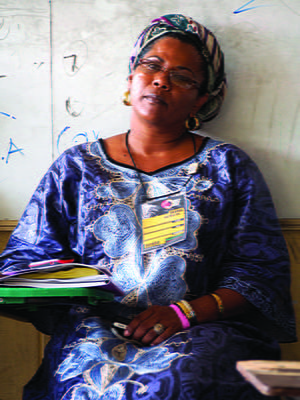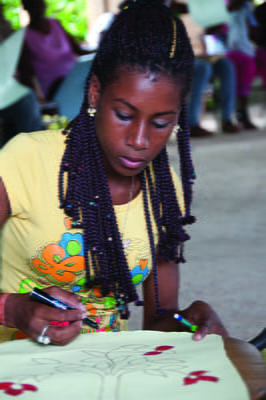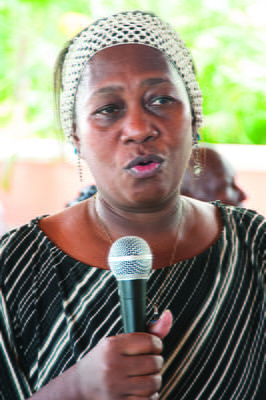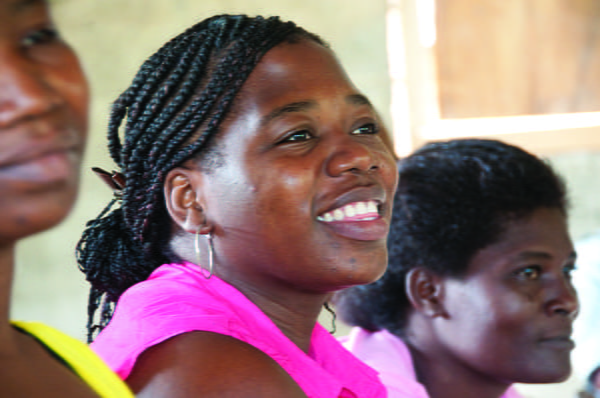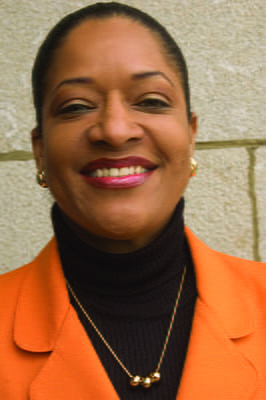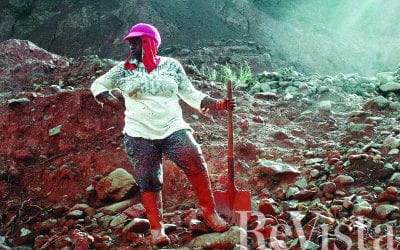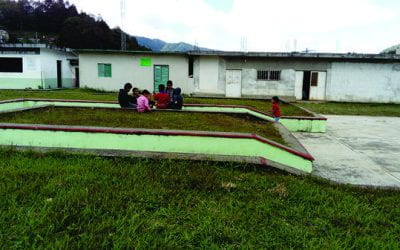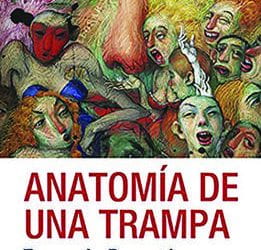Witches, Wives, Secretaries and Black Feminists
Finding Gender in Latin America’s Black Movements
The issue of gender has been front and center for me, both as a subject of my fieldwork on black politics in Latin America, and how I conducted that research, particularly in how I navigated largely male-dominated black organizations. I am, after all, a black woman, albeit one with certain outsider and sometimes privileged status. As an African American researcher from an elite U.S. university, I found that at times I was able to dodge some of the sexism that was so commonplace within the movements I was studying. Still, there were other times where my being a black women trumped any other identity and did not shield me from blatant sexism and sexual harassment. This was especially true because I was a relatively young black woman traveling alone. Because of this, I learned to schedule interviews with activists and bureaucrats early in the day so as to not spill into the evening hours. I also learned to deal with background noise on recordings because I insisted that we keep doors open while conducting interviews, especially with male leaders. Perhaps most interesting, I learned that only certain activists, under certain conditions, would talk to me about how gender, and patriarchy more specifically, figured into these movements.
When I began my first book, Becoming Black Political Subjects in Colombia and Brazil, I was seeking to explain the role of black movements in the rise of specific legislation for black populations beginning in the late 1980s. While I thought gender figured into this story, I did not know how central it would become. My time in the field made it increasingly clear that telling that story required telling another one about how gender gured into black organizing in the region. I became intrigued by how much the internal dynamics of these movements were shaped by gender, in both explicit and implicit ways. Gender was not only important for explaining the successes of black movements in the region, but also for understanding ideological and organizational differences, and was critical to mapping the organizational fields of black movements in each case.
Before going to the field, I knew from the work of Kia Caldwell and Sonia Alvarez that black women activists in Brazil had fought for years to make the case that the mainstream movement’s political platform should pay more attention to the unique ways that racism and gender hierarchies differentially affected black women. They raised many issues, including violence against black women, state-led sterilization campaigns, the exploitation of domestic workers, and the negative portrayals of black women within popular culture. If male-dominated black organizations addressed these issues at all, they often relegated them to the margins. This marginalization mirrored the ways in which a Brazilian women’s movement dominated by white, middle-class women treated issues affecting black women. Because of this double marginalization, a black women’s movement in Brazil began to rise during the 1980s and 1990s. While the dozens of black women’s organizations that arose during this period had varying degrees of relationships to both the black movement and the women’s movement, they also sought to carve out their own space.
Knowing this, but not fully understanding this history, I remember naïvely asking activists in Brazil’s black women’s organizations how they began their militancy in the “black movement.” Many of them responded as Vilma Reis did, “The experience of the movement of black women, for me it isn’t the experience of the black movement” (interview, Vilma Reis, June 2009). Other black feminists corrected me, saying, “Oh, you mean the black women’s movement?” These activists wanted to make an important ideological and historical distinction. As Edna Roland, one of the founders of the black feminist organization Speak Black Woman! explained, organizations that we typically understand as “the black movement”—as well as state institutions like the Conselho do Negro in São Paulo— were in fact “fundamentally masculine” (interview, Edna Roland, May 2010). Black women, fed up with both overt and subtler forms of sexism within male-dominated black organizations, began to build spaces within and outside mainstream black organizations where black women could organize autonomously. Their critique of the male- run black movement was multilayered. Women who had worked within “mixed organizations”—or organizations made up of both men and women—found the sexism palpable. Organizing separately meant that women could take leadership positions in ways that they could not in male-dominated organizations. Consequently, they could fully develop their voices as militants.
In Colombia, the black women’s movement was slower to develop than in Brazil. While the Association of Afro-Colombian Women was created in 1990, it was not for a decade later that the network would take shape. During the First National Assembly of Afro-Colombian Women held in Tolima, which convened hundreds of black women, the association became the Kambirí National Network of Afro-Colombian Women. At the same time, another dynamic was emerging in towns along riverbanks throughout Colombia’s countryside, as black women began to organize in groups and networks within the ethno-territorial movement. Just like their counterparts in urban black organizations, black rural women had also been central to the intellectual, political and everyday administrative functioning of black peasant organizations. Nevertheless, and with few exceptions, it was men who became the most visible protagonists of these movements. In ethno-territorial movements on Colombia’s Pacific Coast, this contradiction became increasingly pronounced, and was at the center of the rise of black women’s groups and networks. Unlike their urban counterparts, these black women’s groups were less likely to understand themselves as feminists, even though they were radically challenging gender hierarchies.
The experiences of black women active in Colombia’s male-dominated ethno-territorial movement sound strikingly like those of black women throughout the hemisphere. Fundamentally, patriarchy and traditional ideas that “la politica es cosa de hombre”—politics are a man’s thing— as one activist put it, made the eld of black politics a profoundly gendered space. One place where this was particularly obvious in Colombia’s black movement was when black women stepped outside of traditional roles, and appropriated political styles associated with masculinity. In doing so, several Afro-Colombian activists became known as the brujas or witches of the movement. These women were often in organizations that they started themselves, and were powerful and polemic figures in the movement. While I suspected that they appropriated the representations of themselves as witches in order to sustain their position in the movement, this was confirmed in my interviews with some of them. The women who occupy this symbolic category of “the witch” in the movement are also the only women that I saw at the center of male-dominated black movement gatherings literally fighting over the microphone and yelling at high government officials, just as the male leaders often did.
While these women did not raise issues around gender in their political platforms, their presence did highlight some of the ways that gender functioned in these movements. In particular, these brujas adopted a particular kind of protagonism that allowed them to, as one Afro-Colombian male activist said, “go head-to-head” with male leaders, which included adopting masculine oratorical styles. Yet while they acted like their male counterparts, their political performances were also tinged with something we might call the “witch persona.” For example, one such leader hardly ever misses an opportunity to cry, laugh hysterically, enter political gatherings dramatically. Sometimes she would even take off her head wrap in the midst of heated political debates, like a tornado swirling above the crowd. Yet, as these women contested traditional gender roles within the movement, new gendered ways of understanding them emerged that had to reconcile the conflation of political power and masculinity. In understanding these women as witches, black activists reproduced the idea that certain kinds of political power, if held by women, must be supernatural. This kind of power seemed juxtaposed with the natural political power that men possess.
The stories of the black women activists I met while in the field, as well as own experiences navigating a similarly treacherous political terrain, led me to a new research project tentatively titled Witches, Wives, Secretaries and Black Feminists: The Politics of Gender in Black Movements in Latin America. In it, I draw on some of this previous ethnographic work as well as interviews with activists to better understand how gender figures into black organizing in this region. How do black women in Latin America involved in black movements reproduce, appropriate, perform, and sometimes subvert expected gender roles? Relatedly, is there a way to occupy more “appropriate” gendered areas and still challenge them? How do black female leaders understand their own protagonism? Finally, how are women who reject their so-called appropriate roles understood and what are their relationships with activists (female and male) of male-dominated organizations?
Addressing these questions means taking seriously the ways in which black women activists sometimes attempt to undermine patriarchy within male- dominated spaces and within dominant tropes for female participation. One example of this comes from black women activists—from Colombia, the Dominican Republic, Costa Rica and Brazil—who organized around the Third World Conference against Racism in Durban, South Africa (2001). They told me that while the men in the movement loved to “echar discurso” and grab the microphone during meetings, when it was time to actually do the work of writing the documents, few men were left. As such, rather than fight with their male compadres over the inclusion of speci c provisions on black women’s rights in official black movement declarations, they simply would insert them at the crack of dawn, when only they were left to do the work of writing up the official declarations. It was a sly acceptance of a more appropriate gendered role for women—in this case, the role of the secretary. These women reminded me of the classic case of the Mothers of the Plaza de Mayo in Argentina where women were able to take a serious political stance against human rights violations (specifically forced disappearances) in the midst of a repressive dictatorship precisely by appropriating the acceptable role of the grieving apolitical mother. As I worked in solidarity with black movements in both countries, I was often was in charge of keeping notes, partially because of gender, but also because I had a laptop. As I typed away, I often thought about what kinds of power could be exerted in the act of writing meeting notes and official declarations. This is one of the many questions I will tackle in this new project.
Winter 2018, Volume XVII, Number 2
Tianna S. Paschel is assistant professor of African American Studies at the University of California-Berkeley. Her research centers on understanding the relationship between racial inequality, politics, and globalization in the Americas. She is the author of the award-winning book, Becoming Black Political Subjects: Movements and Ethno-Racial Rights in Colombia and Brazil. Her work can also be found in the American Journal of Sociology, the Dubois Review, Ethnic and Racial Studies, and SOULS: A Critical Journal of Black Politics, Culture and Society.
Related Articles
Afro-Latin Americans: Editor’s Letter
My dear friend and photographer Richard Cross (R.I.P.) introduced me to the unexpected world of San Basilio de Palenque in Colombia in 1977. He was then working closely with Colombian anthropologist Nina de Friedemann, and I’d been called upon by Sports Illustrated to…
Compañeros En Salud
English + Español
I have lived in non-indigenous rural Chiapas in southern Mexico since 2013, working with Compañeros En Salud (CES)—a Harvard af liated non-profit organization that partnered with…
Anatomía de una Trampa
English + Español
While campaigning, many politicians in Latin America use the rhetoric of dignity and rectitude to sway voters. However, in power, they often forget electoral promises, abusing…

